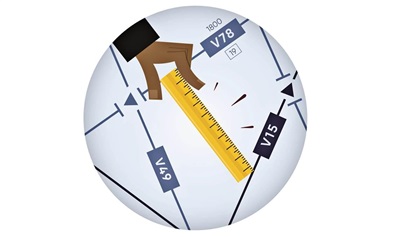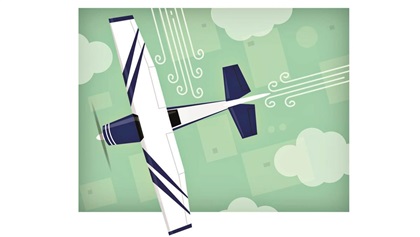 Checkride-ready
Checkride-ready
See how you measure up to FAA standards with these questions from the AOPA Pilot Information Center.
1. Which ATC facility should the pilot contact to receive a special VFR departure clearance in Class D airspace?
A. Automated Flight Service Station.
B. Air Route Traffic Control Center.
C. Air Traffic Control Tower.
2. The width of a federal airway from either side of the centerline is
A. 4 nautical miles.
B. 8 nautical miles.
C. 6 nautical miles.
3. Unless otherwise specifically authorized, no
person may operate an aircraft that has an Experimental certificate
A. beneath the floor of Class B airspace.
B. over a densely populated area or in a congested airway.
C. from the primary airport within Class D airspace.
4. To set the high-intensity runway lights on medium intensity, the pilot should click the microphone seven times, and then click it
A. one time within four seconds.
B. five times within five seconds.
C. three times within three seconds.
5. An ATC radar facility issues the following advisory to a pilot flying on a heading of 360 degrees: “Traffic 10 o’clock, 2 miles, southbound.” Where should the pilot look for this traffic?
A. Northwest.
B. Northeast.
C. Southwest.
 Ace
Ace
Can you correctly answer these questions from retired TWA captain and 28,000-hour pilot Barry Schiff?
6. True or false? While planning a flight, a pilot notes that the wind is forecast to be exactly perpendicular to his true course. This means that groundspeed will be equal to or greater than true airspeed.
7. The airflow above a wing follows the cambered (curved) upper surface (except at excessive angles of attack) because of a phenomenon known as the _____ effect.
8. A pilot is proceeding toward an airport that is surrounded on a sectional chart by a magenta, keyhole-shape dashed line. The airport is situated within or under
A. Class D airspace beginning at the surface.
B. Class D airspace beginning at 700 feet above ground level (agl).
C. Class E airspace beginning at 700 feet agl.
D. Class E airspace beginning at the surface.
9. True or false? A pilot may stress a typical lightplane in the Normal category to as much as 3.8 Gs (the normal, positive, limit load factor) except when the wing flaps are extended.
10. True or false? If half of the sky is obscured by cloud at a given height above the ground, this is considered to be a broken layer.
Final Exam Answers
- The answer is C. Class D airspace includes a control tower. To receive a special VFR departure clearance, contact the operating control tower. (FAR 91.157 and Aeronautical Information Manual 4-4-6)
- The answer is A. A federal airway, or victor airway, typically begins at 1,200 feet agl, and extends up to, but not including 18,000 feet msl. It is 8 nautical miles wide; 4 nautical miles on either side of the centerline. (Aeronautical Information Manual 5-3-5)
- The answer is B. 14 FAR 91.319(c) prohibits the operation of aircraft with an Experimental certificate over a densely populated area or in a congested airway.
- The answer is B. Suggested use is to always initially key the mic 7 times; this turns on the lights to the maximum intensity available. An adjustment to medium intensity would require 5 keys of the mic in 5 seconds. (Aeronautical Information Manual 2-1-9 and table 2-1-3)
- The answer is A. While heading north, traffic at 10 o’clock would be approximately 30 degrees ahead of the left wing, or northwest.
- False. A direct crosswind requires crabbing into the wind, which reduces groundspeed.
- Coanda. This behavior of fluid flow is named after the French engineer and inventor, Henri Marie Coanda.
- The answer is D. Otherwise, Class E airspace normally begins at either 700 or 1,200 feet agl.
- True. With the flaps fully extended, the limit load factor of a lightplane in the Normal category in most cases is only 2 Gs.
- False. It is a scattered layer because it obscures three-eighths to four-eighths of the sky. A broken layer obscures five-eighths to seven-eighths of the sky.
Illustrations by John Ueland


